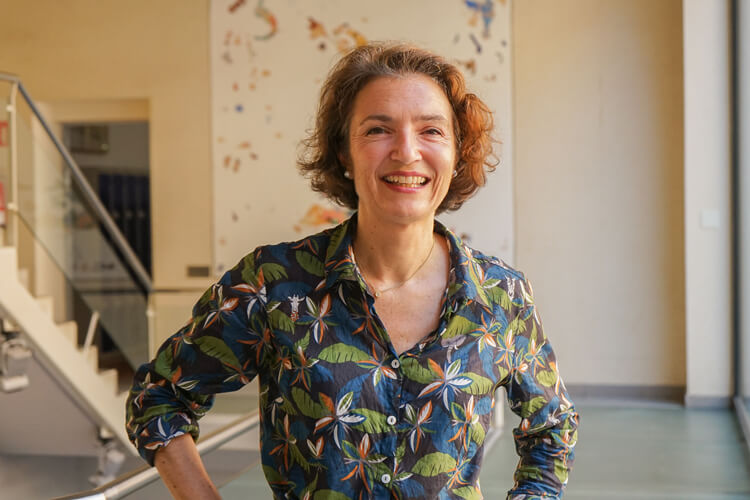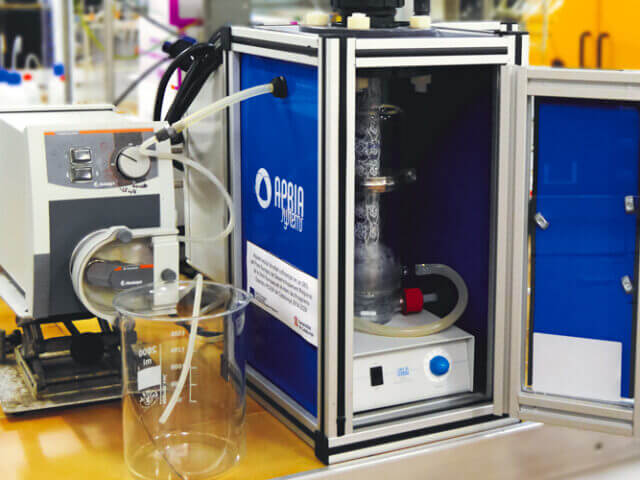Interview with Dr María Auset, Water Sciences Specialist
It is a fact that Catalonia is currently immersed in a period of prolonged drought after many months without abundant rainfall in most of the region. This situation could lead to water scarcity due to the deficit of existing water resources and demand that is close to reaching the natural availability of both surface water (rivers and reservoirs) and groundwater (aquifers), which are needed to guarantee total water demand (urban, agricultural, environmental, and industrial).
We discussed the current challenges related to water and the lack of rainfall with Dr María Auset, PhD in Pharmacy and Water Sciences, and researcher with the GESPA (Environmental Process Engineering and Simulation) research group at the IQS School of Engineering.
Could you tell us about the drought that Catalonia is now facing? Can it be attributed to climate change?
There are many converging factors. Our region is conditioned by the Mediterranean climate, which is characterized by irregular, highly variable rain alternating with recurrent drought cycles. In recent years, there have been several periods of drought. However, the problem we have now really involves supply because the internal basins managed by the Catalan Water Agency are the ones with the lowest water reserves. That’s where more people live and, therefore, where there is more demand.
This situation can lead to an increasingly evident structural water deficit. It’s not only an issue of increasing temperatures and the absence of rainfall (which we can associate with climate change) as there are also other causes such as changes in land use.
“The structural water deficit isn’t only an issue of increasing temperatures and the absence of rainfall”
What about abandoned crop land?
Definitely. During the second half of the twentieth century, many crop and pasture fields were abandoned. This situation led to a significant increase in forest area. Trees, which are large CO2 absorbers, are also large water consumers, which they also store: for every gram of CO2 absorbed, they need 500 grams of water to transpire.
According to the 2021-2023 Catalan Climate Change Adaptation Strategy, forests absorb 80% of rain while just 20% ends up in rivers and aquifers. These changes in forest structure, together with the impacts of climate change, have led to a reduction of up to 30% in the flow of certain rivers over the last 30 years, leading to reservoirs and aquifers having less and less water reserves.
In addition to this, we could add other problems such as water leaks in our rather old and extensive distribution network, which are complicated to repair, or the current situation of the aquifers, which are in quite bad shape.
Why are they in such bad shape?
Mainly because there are high concentrations of nitrates derived from the pork industry in our region. This industry is dedicated to fattening pigs here, which need a high contribution of nitrogenous matter to develop their musculature. But pigs metabolize nitrogen very poorly, only taking advantage of 33% of what they ingest, with the rest ending up excreted and in crop fertilizer and, therefore, as waste in aquifers in the form of nitrates. This causes many mains water supply wells to be rendered unusable for this reason. And it’s not easy to remove nitrates from water as the technology isn’t straightforward.
What can we do in view of this situation?
We need to manage water differently. We have solutions, and we’re better prepared today to react to a critical situation than we were during the 2008 drought. Currently, we have good infrastructure, both in terms of facilitating the regeneration and reuse of water and seawater desalination plants.
Since 2009, Catalonia has had the Prat desalination plant, which provides 80 hm3/year of additional water, a volume equivalent to the water consumption of the metropolitan area of Barcelona for four months. The other plant that transforms seawater into drinking water is the Tordera plant, the first one that was launched in Catalonia in 2002. Now, the Government of Catalonia is planning to increase the desalination capacity of the Prat plant and to build a new one in the Foix basin.
“Currently, we have good infrastructure both in terms of facilitating the regeneration and reuse of water, with circular economy objectives, and seawater desalination plants”
But isn’t a negative aspect with desalination plants that they have rather high energy demand?
It’s certainly true that they do, but the technology is currently much improved and, consequently, their energy efficiency has increased as well. Sure, they’re high consumption plants, but we have to find solutions, right? It’s really difficult to impose restrictions and even more difficult to raise general awareness among the entire population about the responsible use of current water reserves and not wasting it.
Is there any other solution without having to rely on seawater?
We have another option, which is using regenerated water with circular economy objectives. Until recently, treated and purified wastewater from wastewater treatment plants (WWTPs) ended up in the sea. But wastewater can be given new uses through the implementation of water regeneration stations (WRSs), where wastewater receives specific disinfection and refinement treatments that enable it to be reused for non-potable uses such as irrigation for agriculture and green areas, sewage maintenance, street cleaning, and even industrial uses. For example, at the Prat de Llobregat WRS, regenerated water is being injected into the Llobregat Delta to curb salt intrusion and maintain its ecological flow.
All this has been underway for some time, but the Government of Catalonia now wants to promote and enhance this reuse of the water that comes to the treatment plant and use it in urban areas to save extremely valuable drinking resources. Another example is how all the water used in the sanitary and irrigation networks at the Barcelona airport will come from the Prat WRA once it has been disinfected.
Are you working on any projects related to any of these areas within the GESPA group at IQS?
Yes. The GESPA group was part of the REGiREU project consortium promoted by ACCIÓ and the Government of Catalonia within the RIS3CAT Aigua community. The goal of the project was to develop innovative and competitive technologies to obtain regenerated water that met quality standards and had no health risks. Several pilot tests were implemented throughout Catalonia. At IQS, we developed a pilot reactor with sets of UV-LEDs lamps for water disinfection and the removal of emerging contaminants.
Now the group is also working on the PrecisionERA project, led by Dr Cristian Gómez, to map chemical contaminant traces in reused water from WWTPs in Catalonia and conduct metabolomic studies in aquatic organisms.



